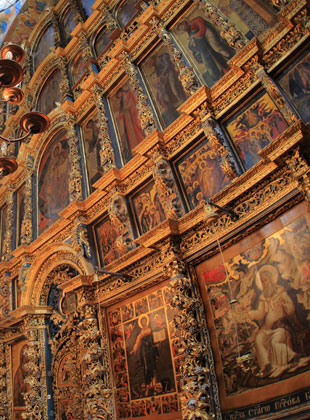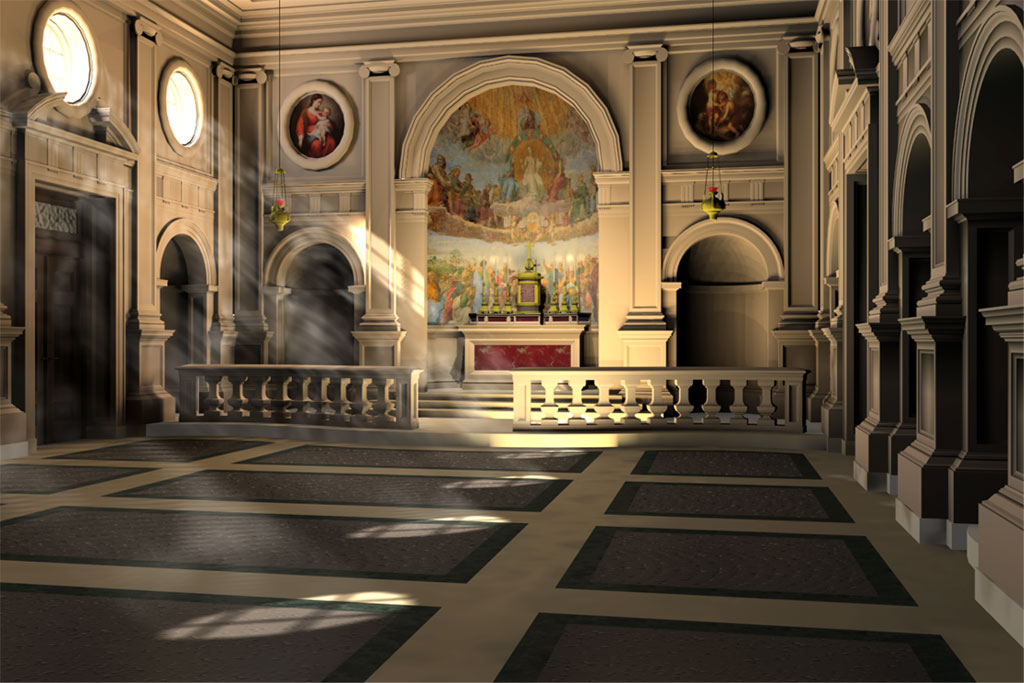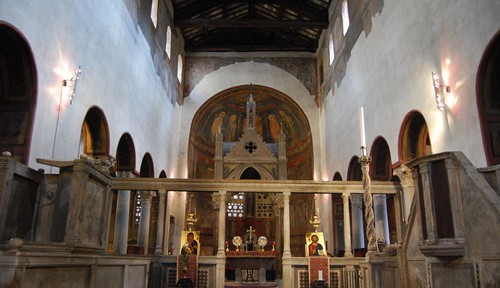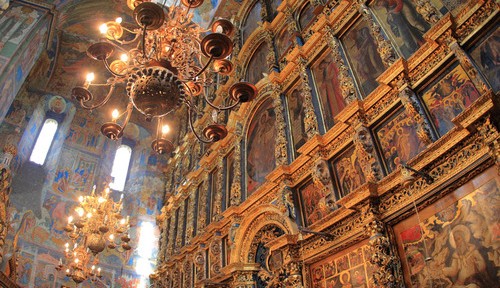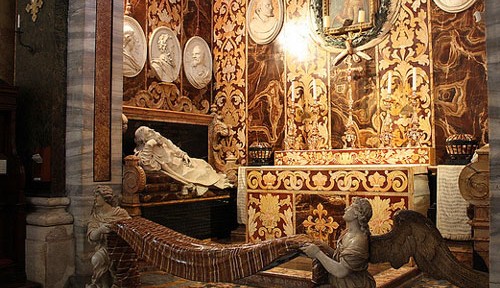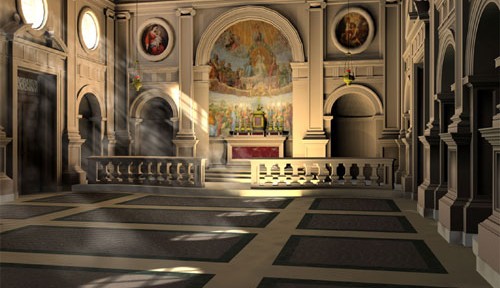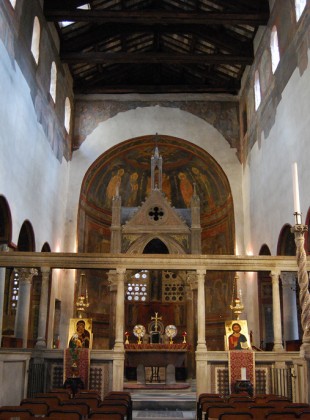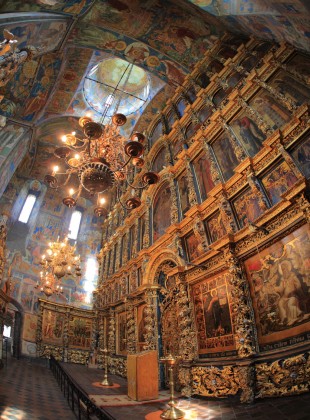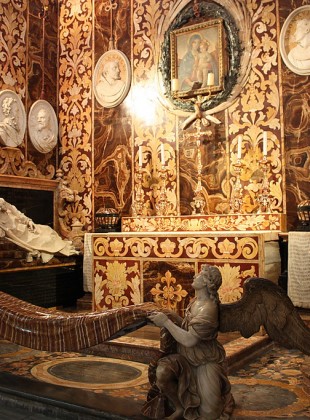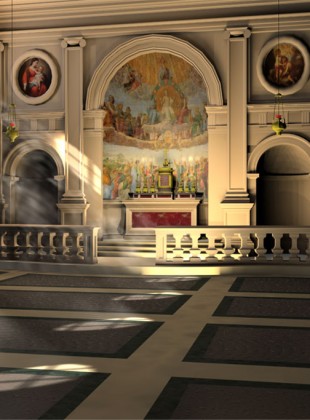Continuing our series on the parts of the church building, St. Germanus goes on to say:
8. The entablature is the legal and holy decoration, representing a depiction of the crucified Christ by means of a decorated cross.
9. The chancel barriers indicate the place of prayer: the outside is for the people, and the inside, the Holy of Holies , is accessible only to the priests. The barriers, made of bronze, are like those around the Holy Sepulchre, so that no one might enter there by accident.
An entablature is a decorated beam supported by either a wall or at least two columns. (More on that here.) In this case, it is supported by columns as St. Germanus is referring to the barrier dividing the nave from the chancel, or sanctuary. In fact, the word chancel derives from the Latin word for gates, cancelli (pronounced kan-chelly).
However, St. Germanus is not describing what we call a chancel screen in the West. A chancel screen separates the nave (the area traditionally reserved for the laity) from the choir and the sanctuary (the area traditionally reserved for clergy). The barrier St. Germanus describes separates the sanctuary from the choir. It is the boundary of the Holy of Holies, and is the forerunner of the eastern iconostasis and the western altar rail.

A view from the choir looking toward the sanctuary at Santa Maria in Cosmedin, Rome. Columns and entablature atop the low wall, or templon, mark the boundary of the sanctuary. In antiquity, curtains hung between the columns
[Image source]
Now, footnote eight in the text explains that by “Holy Sepulchre” St. Germanus is referring to the Church of the Holy Sepulchre in Jerusalem, built by Constantine. However, surely St. Germanus is showing us the mystical meaning of these barriers and is referring to the tomb of Christ.
Joseph took the body, wrapped it in a clean linen cloth, and placed it in his own new tomb that he had cut out of the rock. He rolled a big stone in front of the entrance to the tomb and went away. [Matthew 27:59-60]
“Take a guard,” Pilate answered. “Go, make the tomb as secure as you know how.” So they went and made the tomb secure by putting a seal on the stone and posting the guard. [Matthew 27:65-66]
Just as the sanctuary symbolizes the tomb, so the barriers symbolize the stone, the seal, and the guard. The sanctuary is a sacred place, and as such must appear secured. One is also reminded of the barrier set up at the gate to the Garden of Eden after the expulsion of Adam:
After he drove the man out, he placed on the east side of the Garden of Eden cherubim and a flaming sword flashing back and forth to guard the way to the tree of life. [Genesis 3:24]
Original sin created a barrier between the visible world and the invisible world.
These screens in the more important churches were always made of the most precious materials, and were highly ornamented. The screen at the Hagia Sophia, St. Germanus’s cathedral, consisted of twelve columns surmounted by an entablature, with icons in between, all made of silver.
In the East, in reaction to the iconoclast heresy, the barrier was further elaborated with icons. Here is the sumptuous iconostasis in the Church of Elijah the Prophet, in Yaroslavl, Russia. It provides the faithful many windows into the heaven that lies just on the other side.
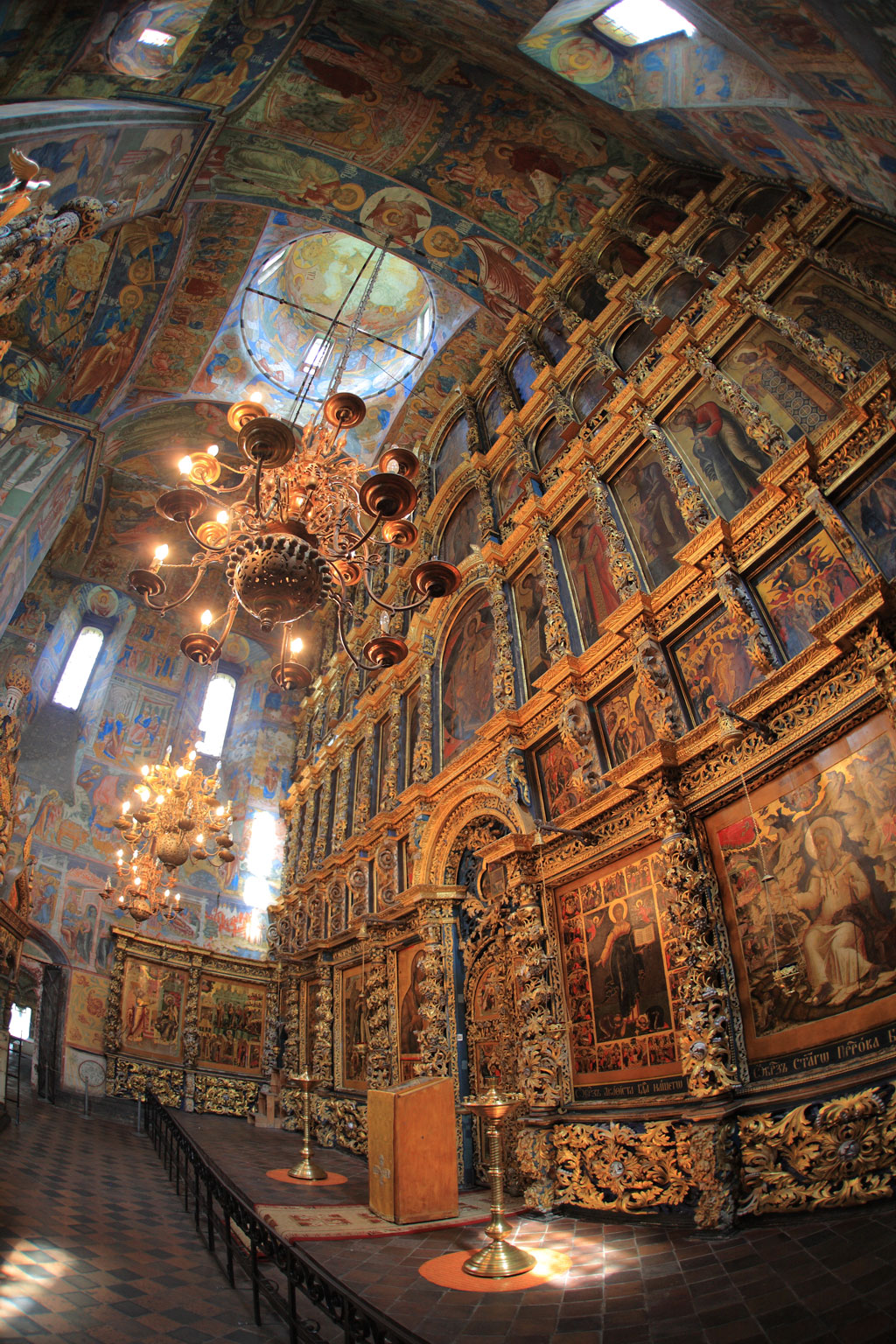
Church of Elijah the Prophet
[Image source]
In the West, the barrier was simplified to form what is now called an altar rail. Here is one of the most charming altar rails I’ve seen, at Borromini’s Spada Chapel, in San Girolamo della Carità, Rome.

Cappella Spada, San Girolamo della Carità
[Image source]
Normally, the modern altar rail is composed of balusters and a rail. Here is our proposal for the conversion of an old school gymnasium into a perpetual adoration chapel, at the Church of St. Agnes, New York City. The stone altar rail is simple yet dignified, it suggests an important boundary, and provides an ideal setting for Holy Communion–when heaven and earth touch.

